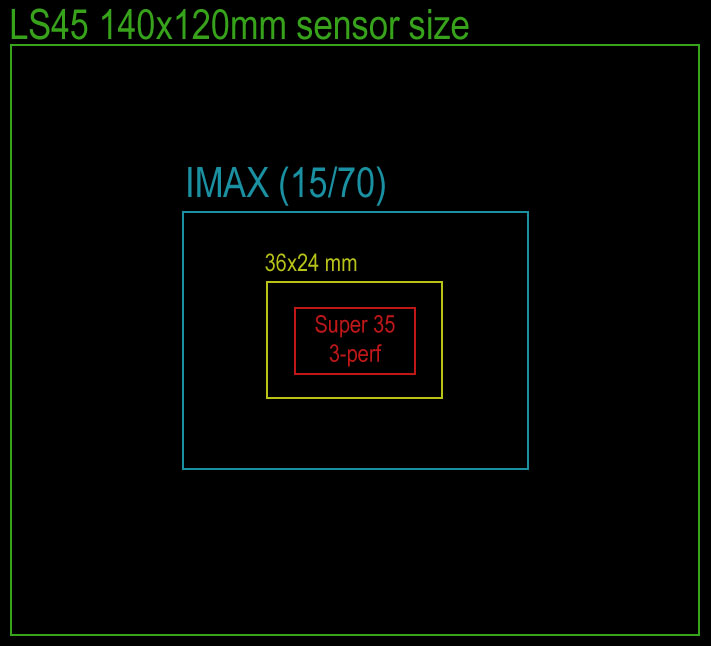LS45 Large Format Video
The LS45 offers large format video. When we say "large format", we refer to the still camera terms. A typically video useage of the term "large format" would be called "small format" by still photographers.
The LS45 video has sharper, bigger pixels, so it enlarges well to 4k. We include an NN enlarging program with the camera that will enlarge the video to 4k.
The LS45 has the largest video sensor other than the LS911.

Specifications
- 14 bit lossless RAW
- Pixels: 2802x2400 with cropping options
- Pixels: 5601x4797 Enlarged x4 with our software
- Electronic shutter fastest speed 1/30s.
- Optional liquid crystal shutter fastest speed 1/500s. (in development)
- Engineering DR low ISO: 12.2 stops
- Engineering DR high ISO: 11.6 stops
- Low ISO color: 100
- High ISO color: 800
- High ISO color with LC shutter: 200 (estimated)
- Low ISO monochrome: 250
- High ISO monochrome: 2,000
- High ISO monochrome with LC shutter: 500 (estimated)
- Color: The most accurate color of any camera, and also the best. There are issues with sensitivity to angles of light, which will have software corrections.
File Format
The current format saved is linear lossless unprocessed RAW, it needs external processing to output to various formats. We also make a real time small video file to help preview composition.
RED has a patent on 4k lossy raw, which includes CinemaDNG and ProRes RAW. BlackMagic made their own free Blackmagic RAW, though it is only 12 bits, and we need 14 bits. So we won't be using Blackmagic RAW, Cinema DNG or ProRes RAW.
Rolling Shutter
LS45 4x5 Large Format Digital Back rolling shutter test by fan 2460 FanTest24fps. I'm working on a liquid crystal shutter which would allow a global 180 degree shutter angle. This video shows the full electronic shutter that is 1/30s.
Enlarging
The LS45 is 2802-pixels wide. Since the pixels are big and sharp, they enlarge well to double the width and height. Then you can downsample to 4k.
We will give out our enlarging software. It has two versions: a CPU version and the other is a Nvidia GPU version. The GPU version is about 20 times faster, which would be useful in a commercial enviroment since enlarging is a time consuming process. The enlarging effect is similar to Topaz Labs but might be a little better.
Here's a still frame from a video and the enlarged example. Both crops are unsharpened, but the enlarging process seems to automatically sharpen images: click to get the full JPEG
Download TIFFs original vs enlarged
The camera has a USB3 storage port out. We are using USB Enclosures for m.2 drives which are fast enough to record RAW video. The max data rate for full frame RAW video is around 390 MB/s. In a commercial environment, you would take the drive from the camera then put in a PC and process, while a new USB drive would be put into the camera. You would want a fast PC with a good Nvidia GPU for enlarging quickly.
The video uses lossless compression.